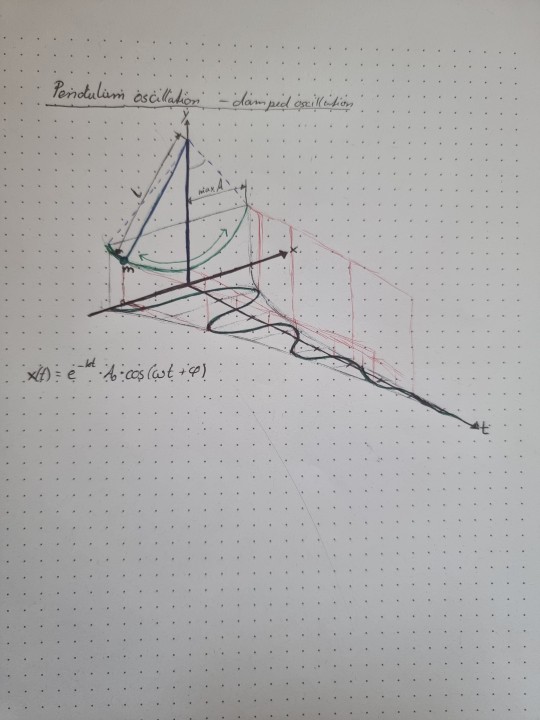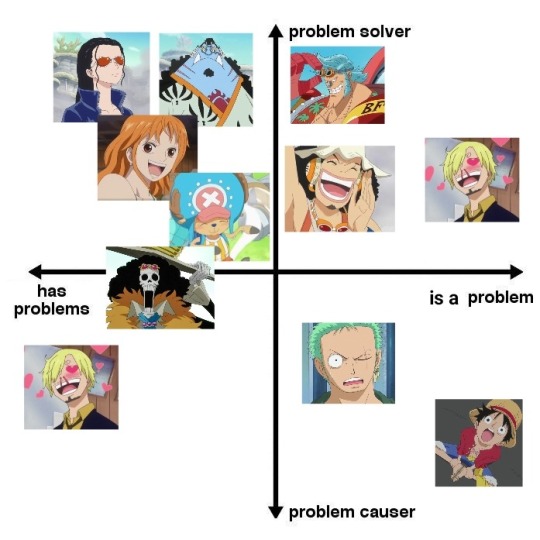#pendulum oscillation
Text
Pendulum oscillation

#function plot#function plots#pendulum#pendulum motion#motion#pendulum oscillation#oscillation#damped oscillation#harmonic motion#math#mathematics#physics#dynamical systems#dynamical#dynamics#calculus#3d function plot#3d function plots#plots#hand-drawn function plots
236 notes
·
View notes
Text
Maybe you just need to listen to the entire soundtrack of the motion picture La La Land to feel like a human being again
#I’m a pendulum#I’m oscillating between the wildest most unrelated things rn#everyone look away#la la land#Ryan gosling#I’m kissing you metaphorically
2 notes
·
View notes
Text
how do i figure out when to let go
#vagueposting the shit out of tumblr dot com#I’m so tired I’m so confused she makes me such a pathetic mess#a really big part of me wants to let go and never look back#i know i could do it too the hardest part is over#but at the same time I just can’t a part of me is still attached and scared#i know we’re not as close i know I don’t mean that much to her I just feel like a burden she keeps stringing on out of obligation#because she doesn’t know how to shut me down#but I have no way of knowing if that’s true#and I don’t know how to inhibit my feelings from going all over the place and oscillating like a spiralling pendulum#i hate my fucking adhd brain#i wish she’d just tell me if she didn’t want this anymore at least I wouldn’t be killing myself over it#i literally just spend 95% of this relationship second guessing myself and feeling like shit#that’s not healthy right. but I don’t know I don’t fucking know that isn’t her fault#i hate my brain
1 note
·
View note
Text
I enjoy many poets whose work I’d call “warm.” I love Billy Collins and Mary Oliver, for example, but I would not depend on them to tell me their whole truth. They prefer, perhaps, to please me, to wish me well, to enable me. There is a place for them on my shelves. After a hard day, tired in the evening, I will reach for them.
But they don’t give me that shuddering thrill. They do not, like certain close friends of mine, stop me mid-sentence to challenge the bullshit I’ve been speaking. They do not lock eyes with me and tell me what’s really on their mind. They will never change my life.
[...]
Cold art, when it enacts the moment of death over and over, isn’t interested in death in itself, but wants to remind us of death. We are, as at a funeral, not the corpse but the attendees. The life force still surges within us. Cold art doesn’t urge us toward nihilism, but reminds us to live now, to get things done, that we are vital. This is the wisdom of it. Without such reminders we risk becoming fools, like Lear.
Cold art is not harmful or bad at all, but provides a useful counterpoint to “happiness” in our society, which is severely overemphasized. Our existence naturally oscillates between warm and cold. This oscillation must be allowed, or the pendulum will break.
When that deep cold is invoked—in a poem, a song, a painting, a voice on the subway—the windless ice forest wakes within me. And it’s in me always, the cold. The spiritual, psychic cold. While driving my motorcycle through the potholed streets of Philadelphia, while leading a poetry workshop, while chatting to my mother, while eating dinner, while watching Netflix with Tiina. That cold forest, its myriad frozen boughs, bristles within me.
John Wall Barger, In the Cold Theatre of the Poem.
[emphasis added]
#THIS!!!!!!!!!!!! is my problem with tumblr uwu wild geese orange peeling poem culture#i want to be fucking rattled and beaten and socked in the chest!#john wall barger#writing#words#readings
501 notes
·
View notes
Text

Sanji oscillates between those two spots like the most chaotic pendulum you've ever seen
#one piece#luffydmonkey#luffy d monkey#monkey d luffy#one piece zoro#one piece sanji#roronoa zoro#black leg sanji#one piece nami#one piece usopp#tony tony chopper#chopper#nico robin#one piece robin#one piece franky#soul king brook#one piece brook#one piece jinbe#straw hat pirates#straw hat crew#charts
877 notes
·
View notes
Text
The pendulum of the mind oscillates between sense and nonsense, not between right and wrong.
C.G. Jung
189 notes
·
View notes
Note
how do we convince ourselves that better days are coming. its getting hard to think positive
i try not to think about it in days but by the natural oscillation of the spectrum of human emotion. like even if i am too mentally ill to ever feel happiness i know at some point the pendulum is going to swing the other way enough to the point where believing in better days doesn't seem so hard. like it's not always going to feel exactly this hopeless cause super intense feelings / episodes like that always burn themselves out eventually. so just knowing that is coming and trying my best to believe it no matter how unnatural it feels can get me through a difficult moment
59 notes
·
View notes
Text
If you’re looking to avoid the wild oscillation of mischaracterising wylan van eck (the pendulum between uwu baby and mini kaz), it helps to just… stop blanket-labelling behaviour. Unlearn the idea of something being blank-“coded”— these things are fun and funny when they’re memes, but if you’re writing the character (or ANY character), stop approaching things like a handful of moments with limited context can determine what “type” of person he is.
Like… just let him be a person. Keep his backstory and his motivations throughout your story in mind as you take him from point a to point b to point c, and explore his thoughts and his reactions.
I don’t know, maybe that sounds tedious, but it’s one of my favourite parts of character work, and it’s a pretty huge part of writing. I honestly don’t understand how you can like writing and not want to do that, but I digress. If you’re looking to understand a character more completely, though, it helps to take the TikTok Typology of Characters out of your brain, and see where wylan takes you when you stop judging his every move so hard.
#anyway#this goes for any and all characters like it just makes everything so much more interesting when you… let them be people?#I usually stay out of all this stuff and just let my own feelings on characterisations come out through my writing because#I just don’t get this false dichotomy of Wylan#I hope this doesn’t come off dick-ish and I’m not trying to engage in the Disk-Horse#but I apply this to all my characters and it has only ever made me love them more and love my own writing more#wylan van eck#wesper#six of crows#shadow and bone#grishaverse#character design#character work
71 notes
·
View notes
Text
"The pendulum of the mind oscillates between sense and nonsense, not between right and wrong."
― Carl Gustav Jung
77 notes
·
View notes
Text
HOW DOES THE CONCEPT OF TIME CHANGE IN THE PRESENCE OF STRONG GRAVITATIONAL FIELD??
Blog#327
Wednesday, August 30th, 2023
Welcome back,
The force of gravity treats time like taffy. The stronger its pull, the more gravity can stretch out time, making it pass more slowly. By using a new atomic clock, scientists have now measured this slowing of time over the shortest distance yet — just one millimeter (0.04 inch).
Albert Einstein’s theory of general relativity predicts that where gravity is stronger, time passes more slowly.

That’s called time dilation. Gravity is stronger closer to the center of the Earth. So, according to Einstein, time should pass more slowly closer to the ground. (And experiments have confirmed this.)
Jun Ye led the research group that now shows how this holds over even super short distances. He’s a physicist at JILA in Boulder, Colo. (That institute was once known as the Joint Institute for Laboratory Astrophysics.)

It’s run by the University of Colorado and the National Institute of Standards and Technology.
The new clock’s ability to sense tiny changes in gravity makes it a powerful tool. It could help monitor climate change. It also could help predict volcanic eruptions — even map the Earth. And its design paves the way for atomic clocks that are even more super-precise, its creators say. Such clocks could help solve fundamental mysteries of the universe.

The new atomic clock is “a big, dispersed system with a lot of different components,” says Alexander Aeppli. He’s a graduate student on Ye’s team at the University of Colorado. In all, the new clock spans two rooms and contains mirrors, vacuum chambers and eight lasers.
All clocks have three main parts. The first is something that goes back and forth, or oscillates. Then, there’s a counter that tracks the number of oscillations. (That ever-increasing count advances the time shown on the clock.) Finally, there’s a reference against which the clock’s timekeeping can be compared.

That reference provides a way to check if the clock is running too fast or too slow.
A grandfather clock is a helpful way to picture how all these parts work together, Aeppli says. It has a pendulum that swings back and forth, or oscillates, at a regular interval — once a second. After each oscillation, a counter moves the clock’s second hand forward. After sixty oscillations, the counter moves the minute hand forward. And so on. Historically, the sun’s position at noon served as a reference to ensure these clocks ran on time.

“An atomic clock has those same three components, but they’re far different in scale,” Aeppli explains. Its oscillations are provided by a laser. That laser has an electric field that cycles back and forth incredibly fast ― in this case, 429 trillion times a second. That’s too fast for electronics to count. So, atomic clocks use a special laser-based device called a frequency comb as a counter.
Originally published on www.snexplores.org
COMING UP!!
(Saturday, September 2nd, 2023)
"HOW DOES SPEED AND GRAVITY AFFECT TIME??"
#astronomy#outer space#alternate universe#astrophysics#universe#spacecraft#white universe#space#parallel universe#astrophotography#gravitational force#gravity#gravitational
100 notes
·
View notes
Text
bee: so... which one do you like?
eagle: i don't know
bee: STOP PLAYING WITH MY FEELINGS LIKE THIS.
#GIRL#MY POOR HEART#CANT TAKE THIS#PLS#student#stem#turning into cfal students#chaotic academia#chaos#stem academia#jee#help#study#studyblr#desi#pendulum#oscillation#we all know who's the better choice here eagle#education#chaotic academia aesthetic#science#school#college
4 notes
·
View notes
Text
while kaveh being clueless about alhaitham's emotions for him are nice and all and kaveh is in denial, i start thinking about what thinks of his relationship with alhaitham and his feelings for him in a different light when i consider kaveh being an idealist at core.
like his beliefs permeate his whole life, influences his choices, etc. so like what if he's not actually in denial? what if he's trying to make sense of his relationship with alhaitham in a way that aligns with his ideals? I'm talking about how kaveh is probably the kind of person who wants to marry for love
Like i know his character stories, voice lines, etc. tell us that he accepts the transactional nature of his relationship with alhaitham because he was the one who put forth with it first. The way kaveh assigns himself the chores in the house or pays rent as a way to repay alhaitham's kindness
But i'd like to think that he knows even that is very... Not idealistic in a way. What if kaveh thinks that's not enough? And is not what he thinks alhaitham deserves as well
Because something about him reading his mother's diary and finding that the answer to it all is, companionship. Is i think what kaveh is looking for all along, that which lets him see his relationship with alhaitham in a way that aligns with his idealism
Because being in companionship with someone is more idealistic than the whole transactional relationship they had at first, or that maybe the transactional nature, if seen from the lens of companionship, won't have to sound really transactional at all
And that puts kaveh at ease
I guess my point here is, i don't want to think of kaveh as being in denial. What if he is only looking for what he wants out of all this, and what if that is what alhaitham's waiting for
and maybe that's why kaveh's hangout is entitled "the pendulum of weal and woe". maybe it doesn't just describe kaveh's oscillation between happiness and sadness. "In weal and woe" a famous wedding phrase. Maybe he is also looking on how to describe the relationship his relationship with alhaitham, what he wants out of it, and what he feels for him
#i think we should not underestimate how kaveh = idealism is everywhere in his life#and the way he perceives his feelings as facts and which is why i think he is aware he likes alhaitham#but also trying to wrestle with the fact that he doesn't have an idealistic relationship with him to start with#aka their tumultous relationship#anywaaay i got all of these out of being reminded that kaveh is very elizabeth coded and that Elizabeth bennett wanted to marry for love#so you know it all comes back to pride and prejudice#haikaveh#alhaitham#kaveh
58 notes
·
View notes
Text
Clocks and Metronomes in Hannibal
``Hannibal counted the beats of the metronome against those of the clock. They went in and out of phase``
?????? Clocks???! speaking of this, I found out something really cool. I was researching trying to find some kind of connection or UN-connection between clocks and metronomes and what they might mean here, and I found this very interesting journal, which references and builds off of some of Christiaan Huygens' discoveries and work.
Let's list out a couple of things:
Arguably, Hannibal's favorite book is Treatise of Light, by none other than Christiaan Huygens.
``Among Mr. Jakov’s books was a copy bound in leather of Christiaan Huyghens’ Treatise on Light, and Hannibal was fascinated with it, with following the movement of Huyghens’ mind, feeling him moving toward discovery. He associated the Treatise on Light with the glare of the snow and the rainbow distortions in the old windowpanes. The elegance of Huyghens’ thought was like the clean and simplified lines of winter, the structure under the leaves. A box opening with a click and inside, a principle that works every time. It was a dependable thrill, and he had been feeling it since he could read.``
I skimmed a bit of the book- and it does include an explanations of the calculations Hannibal used to determine the height of the towers in his castle- which he was doing before he read the book. Bro is a literal genius.
``Also in the year Hannibal was six, Count Lecter found his son determining the height of the castle towers by the length of their shadows, following instructions which he said came directly from Euclid himself. Count Lecter improved his tutors then—within six weeks arrived Mr. Jakov, a penniless scholar from Leipzig.``
The journal I previously mentioned is, in very simple terms, about how pendulums and clocks synchronize. We can very reliably assume Hannibal is a fan of Christiaan Huygens, it’s very possible he could later have read Horologium oscillatorium, where he discusses these discoveries. Unfortunately, I can not dig too deep into the original text because the only copy I could find is in Latin, and I really don’t want to translate all that. But I CAN use the information provided in the journal. It’s also reasonable to assume Hannibal would know a lot of the information presented in the journal, because although Christiaan Huygens’ books are from the 1600s, Hannibal is not, and discoveries have been made! Science has advanced! Yippee!
In the journal, It is stated that “Synchronization occurs in diverse physical, biological, and chemical systems. Examples include the synchronous flashing of fireflies, the chorusing of crickets, the rhythmic applause of concert audiences, the coordinated beating of cardiac pacemaker cells, the pathological neural synchrony associated with epileptic seizures, and the coherent voltage oscillations of superconducting Josephson junction arrays.”
It all sounds very artistic. It is beautiful and connected. Right up Hannibal's alley, for sure. But- whats that near the end?? “ the pathological neural synchrony associated with epileptic seizures”. Epileptic seizures. Let’s put that away for later.
The synchronisation of pendulums (pendulum clocks, metronomes) placed on the same (wooden) surface even if started at antiphase will eventually become in phase with eachother BUT: synchonizing in phase causes the pendulums in the clocks to slow down, so they lose time (multiple seconds an hour) but- they way they synchronize is dependent on several things(mechanisms in the clock, length and thickness of the surface they're on,etc etc.) but basically- with a SMALL amount of damping (loss of energy in an oscillating system) the clocks with synchronize in phase, with a large amount of it they will be antiphase. clocks synchronizing in antiphase has been called sympathetic motion or the sympathy of clocks (not empathy).
Synchronization in itself is a pretty artistic thing, beautiful and connected. It shows up everywhere- including something called neural synchrony. neural synchrony is basically when two people interact or communicate, their brain rythms/waves synchronize, couple, create matching patterns. You understand eachother. this is seen a lot more in romantic couples or people who are close together, child-parent relationships(especially as infants) and the such. Not usually seen in strangers. the brain to brain synchronization happens in the temporal-parietal part of the brain.
The way will makes himself think like killers- to the point sometimes he feels like he becomes them- is definitely neural synchrony. Why he can do that so easily with strangers, who may have never even met? Who knows; but at least we know all kills leave behind a part of the killer, a part of their psyche, and not always just a message.
Basically, Will's whole metronome thing is symbolic of him synchronizing mentally(and neurologically! Very cool) with the killers. This may have been way too much work for something that is a bit obvious, but it’s very interesting to unravel.
I’m not sure how I started with picking apart clocks and metronomes in relation to Hannibal (in the book), and ended up with a conclusion about Will (in the show), but I did! I can’t say much more on this for now as I haven’t finished the book, and Will has yet to show up.
Now, that thing we put away for later.
Neural synchrony is also associated with epileptic seizures. Neuron firing tends to become synchronous/hypersynchronous in the middle of a seizure.
I wanted to go more into Will's encephalitis and seizures related to this- but those are only a thing in the TV show, so I cant connect it quite as well. I can share the things I did find out, though, so if anyone is interested to see that please let me know! But right now, I'm too researched out to put it all together, and that's mainly why I'm not including it here now.
All in all- we all know Hannibal knows all that psychiatry stuff and is crazy smart and crazy insane, so here is a bit of the science of it and how it all loosely connects to the books.
And, of course as someone who values beauty and art, he would become obsessed with Will upon seeing how effortlessly he can achieve that synchronicity with others- especially those who think similarly to him. Honorable mention to Eldon Stammets.
#hannibal#hannigram#mads mikkelsen#hannibal rising#hannibal lecter#fannibal#hannibal analysis#hannibal and will#will graham#hannibal series#hannibal fandom#hannibal nbc#nbc hannibal#book analysis#show analysis#analysis#lots of science#science#ask me if none of this makes sense#i'm hyperfixating too close to the sun#psychology#eldon stammets#Annimeta#hannibal meta
26 notes
·
View notes
Text
The pendulum of the mind oscillates between sense and nonsense, not between right and wrong.
Carl Jung
#carl g. jung#carl jung#jung#memories dreams reflections#autobiography#biography#quotes#philosophy#wisdom#life#literature#writer#books#psychology#write#psychoanalysis#psychiatry#the mind#the unconscious#the psyche#art#artist#idea#ideas
83 notes
·
View notes
Text



Measuring Time: Electric, Pendulum, and Quartz Clocks
There are numerous types of time keeping devices that qualify as clocks, depending on classifications and sub-classifications. Mechanical clocks were already briefly touched upon in the previous Monday post, and three more categories (electric clocks, pendulum clocks, and quartz clocks) will be briefly described here.
A general category of a variety of clocks, electric clocks are any clock that is powered by electricity instead of other means (whether mechanical or otherwise). They were invented in the 1840s but did not become widely used until electricity was more available to the public. There are several sub-categories of electric clocks and even some electromechanical clocks that rely on both electricity and mechanics. Common varieties include synchronous clocks, which rely on the frequencies of the AC signal, and radio-controlled clocks.
Pendulum clocks are a variety of mechanical clock wherein the time-keeping is reliant upon the swinging of a pendulum. The movement of the pendulum typically rocks a lever back and forth, controlling a weight that slowly drops in time with the pendulum. Because the weight eventually drops as far as it can, pendulum clocks need to be rewound to restart the process.
Finally, the quartz clock is a type of electric clock, wherein the electricity is used to trigger the oscillation of quartz. Quartz is a piezoelectric material. When the electric circuit is turned on, quartz oscillates at a specific frequency (dependent on its size, shape, and crystallographic orientation) that is regular and can be used for time keeping.
Sources/Further Reading: (Image 1 - Wikipedia, Electric) (Image 2 - Wikipedia, Pendulum) (Image 3 - Wikipedia, Quartz) (Electric clocks) (Pendulum clocks) (Quartz clocks)
21 notes
·
View notes
Text
Jean Valjean’s daily efforts to get to Cosette’s house are beautifully compared to the oscillations of a pendulum. The last and shortest swing brought him to a post stone near the house, and he has been confined to his bed ever since.
It appears that Cosette has to be thankful to a kind portress who looked after Valjean during that period. Without her, his decline might have been swifter. It was her who cared to bring him food and water. I think that the gallery of elderly women depicted in the Brick deserves at least an essay Diverse yet remarkable, these women, mostly impoverished, range from gossips to the sympathetic, with some serving as true lifesavers. This portress is one of them, and it’s adorable how she comments on Valjean: “Such a neat old man! He’s as white as a chicken.”
Unfortunately, the doctor summoned by the portress didn't offer much help. Valjean’s health issue is not physical in nature. And people in the nineteenth century believed that one could die due to longing for someone.
28 notes
·
View notes